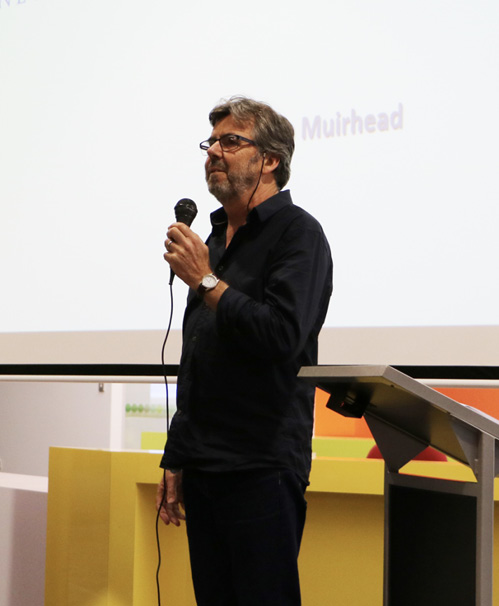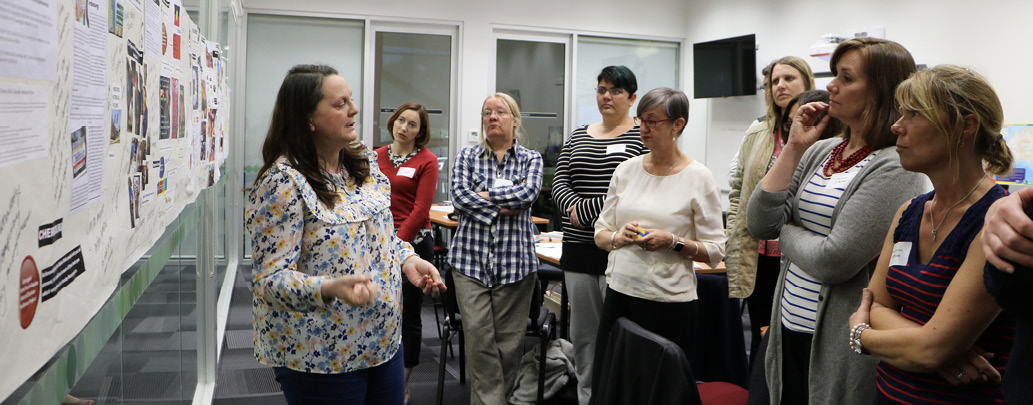Engagement matters
Hansika Bhagani, Australian Institute for Disaster Resilience
Article
In May the Australian Institute for Disaster Resilience co-hosted a two-day workshop with the National Centre for Emergency Management Studies (NCEMS, TAFE NSW) in Albury. The workshop focused on community engagement for disaster preparedness, response and recovery. Sessions were delivered by researchers and practitioners from a range of organisations including Tasmania Fire Service, QFES, RMIT University, Victoria SES, NSW Rural Fire Service and a keynote address from Tim Muirhead of CSD Network.
Tim Muirhead: Developing community, capacity and spirit: Strengthening the ‘me and us’ in communities
Understanding what ‘community’ is, is vitally important Muirhead says, before we begin to explore how to engage with it. A failing of emergency services has been to treat communities as an entity that is locally based. ‘We need to work with the shape of community as it is lived by different people. For some the relationships that they are a part of may be locality based, and for some it may be interests-based, or online-based. We should work with whatever we’ve got.’
By approaching community from a relationship-building model, Muirhead says, agencies and organisations will be better equipped to widen outreach efforts. ‘The hard task of building community begins by finding your allies within the various networks of community. Find an ally and then ask how do we link with your world. You won’t link with everybody; some people will say I don’t go to meetings but they may quietly talk to their neighbour. If we’ve met with their neighbour and we’ve given their neighbour the equipment to talk to their friend, then that’s good as well. An approach of relationship-building will cover as many different shapes of community as possible.’
While communities are rapidly changing, Muirhead notes that as most disasters are locality based, it remains critical to build links and relationships at the local level. ‘Years ago I was complaining to a colleague about the loss of community. And she stamped her foot and said ‘Tim, I’ve got community, it’s just not your 1950’s fantasy of what community looks like.’ But in emergency services, a lot of our emergencies (besides pandemics) are locality based. That’s where we need to do the work of building relationships.’
He admits it isn’t easy to build these, especially in urban environments. ‘You can get literally thousands of books on building a good marriage or how to build a good work team. Where are the books on how to build a good friendship or be a good neighbour? There’s not much there. It’s taken for granted we’ll all be good at it. But we’re not always.
‘We shouldn’t put too high a threshold on what being part of the community feels like. A lot of our community development practices assumes we deal with extroverts. These practices probably bring together a lot of extroverts but don’t bring together that shy self-contained person. What matters is that we’re all linked in to networks of support that will nourish us in particular situations.’

Tim Muirhead delivered the keynote address at Engagement Matters. Image: Hansika Bhagani
Mark Sarago and Jennie Schoof: Empowering communities
This session focused on improving the cultural understanding of participants and their engagement with Aboriginal communities. The session included examples that highlighted successful and not so successful engagement with Aboriginal communities. Participants were guided on a journey through a cultural lens to understand how to merge traditional knowledge, culture and respect for country with aspects of contemporary emergency management.
Top tips for engaging with Aboriginal and Torres Strait Islander communities:
- understand the community
- identify key stakeholders (including elders)
- identify cultural concerns and customs
- manage expectations and keep your promises
- identify other supporter groups in the area
- involve the community in decision-making.
|
Co-hosted by AIDR and the National Centre for Emergency Management Studies, the Engagement Matters workshop was held in Albury on the border of NSW and Victoria. It was the first workshop of its kind to be kind conducted in regional Australia, and its success augers well for future regional offerings. The National Centre for Emergency Management Studies (NCEMS) provides training and professional development for emergency service personnel who seek to increase their skills and confidence in executing their roles. |

Jennie Schoof leads workshop participants through her story of working with Aboriginal communities. Image: Hansika Bhagani
Dr Yoko Akama: Identifying risks
From research developed through the Bushfire CRC, Dr Akama explored the use of playful triggers to support disaster resilience in the community. Dr Akama noted that using asset-based techniques to engage communities and participant-led dialogue to build awareness could be effective for a range of organisations and agencies. This method of information sharing and pinpointing resources allowed local knowledge to emerge from participants as they identified ‘safe areas’, vulnerable households and highlighting aspects of a locality that may be taken for granted by emergency services agencies.

The ‘playful triggers’ used to start mapping resources in Dr Yoko Akama’s session at Engagement Matters. Image: Hansika Bhagani
| For more on Yoko Akama’s resources in participatory risk identification visit the Knowledge Hub: www.knowledge.aidr.org.au. |


